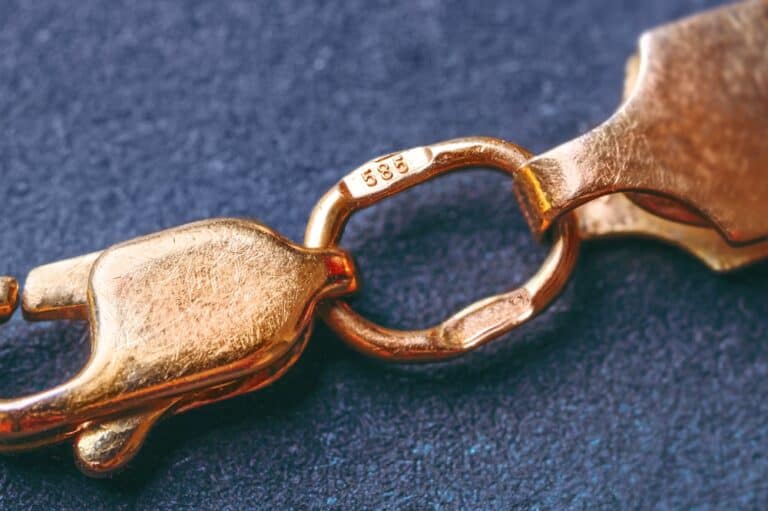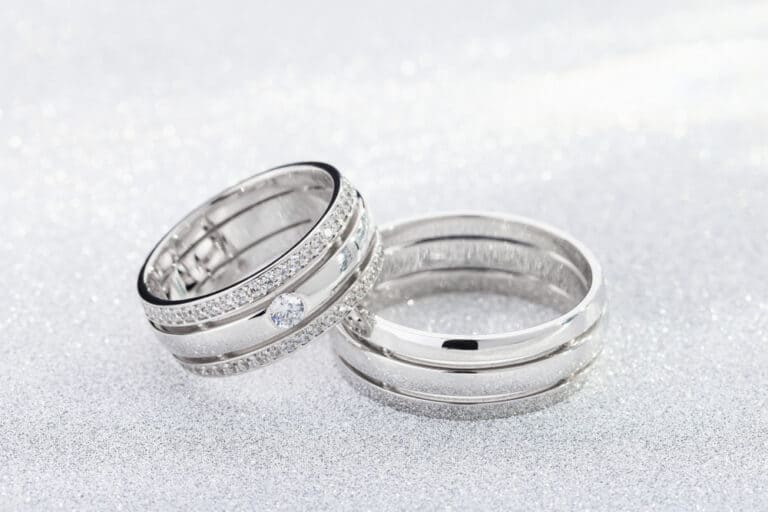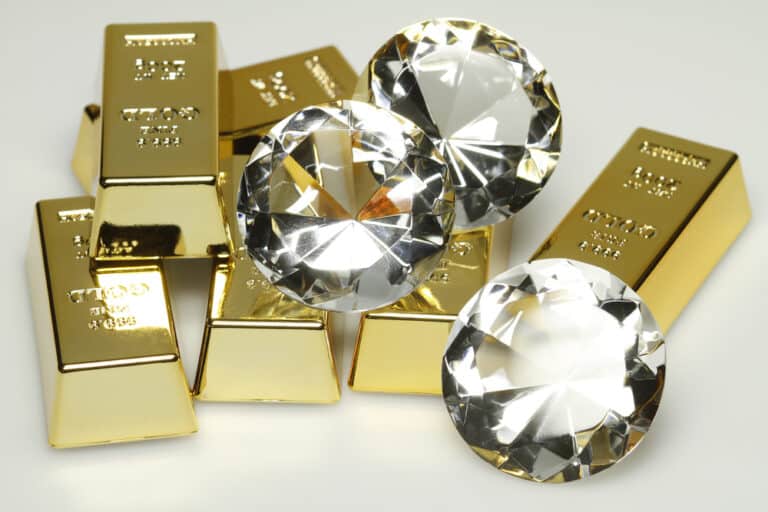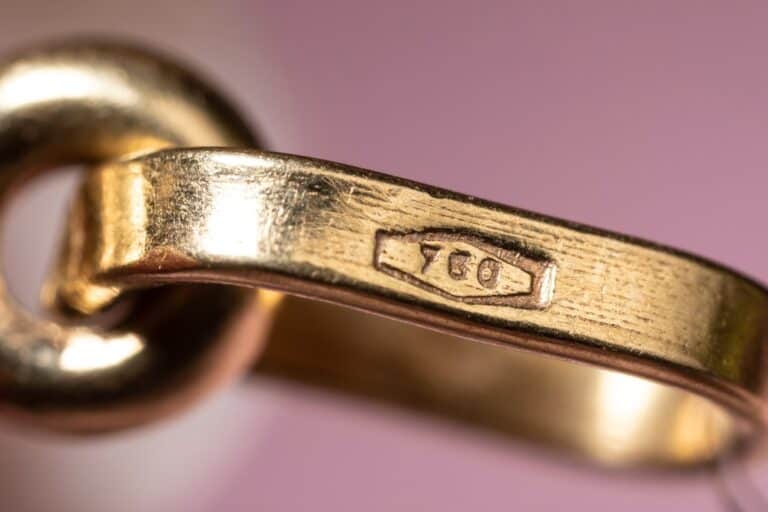Exquisite Italian gold is a testament to the fine art of creating spectacular jewelry since the dawn of time, with unmatched craftsmanship and perfected artisanal skills handed over from generation to generation. So, it’s no wonder it is highly coveted throughout the globe!
Italian gold is any quality gold crafted in Italy with outstanding techniques that emanate from the ancient Etruscans and was refined in ancient Rome, including the Middle Ages. Italian gold markings differ from American karat symbols as they use either 595 (14kt), 750 (18kt), or 999 (24kt) markings.
There is so much to discover about the enduring legacy of sublime Italian gold. So, if you want to know what sets Italian gold apart and why it has lasted for millennia – read on!
The Ancient Roots Of Spectacular Italian Gold
The long and illustrious history of Italian gold dates to the ancient Etruscans, and it is striking to see contemporary Italian gold design features even in ancient roman jewelry.
During that time, Italian jewelers were inspired by designs and techniques from across the globe, and they were especially influenced by African, Asian, Middle Eastern, and European artisans.
Historically leaders and the aristocracy used Italian gold as a status symbol and were adorned with incredibly detailed, costly yellow gold and gemstone-encrusted pieces of jewelry like chain necklaces, earrings, and pendants.
Italian gold jewelry remained fashionable throughout the Renaissance, and because of the heightened demand, artists evolved into goldsmiths to produce outstanding jewelry for the aristocracy.
This enduring dedication to the fine art of creating exceptionally beautiful Italian gold jewelry over the centuries has resulted in world-class goldsmiths like Mario Buccellati, Fornuto Pio Castellani, and Sotirios Voulgaris, who have taken Italian jewelry to new heights.
What Is The Definition Of Italian Gold?
Although Italian gold can be produced in any country region, most pieces are from cities with a reputation for fine craftsmanship, like Florence, Arezzo, Torre Del Greco, Vincenza, and Valenza.
While Italian gold is predominantly of a high standard, compared with gold from across the globe, its only distinguishable feature is fine Italian craftsmanship and unique designs, which sets it apart from gold in other parts of the world.
The art of making exquisite jewelry is highly valued in Italian culture, so the family skill of crafting fine pieces of spectacular Italian gold pieces is passed on through generations.
How Can You See If Italian Gold Is Real?
There is sadly a lot of counterfeit Italian gold jewelry on the market today, and due to their outstanding likeness to the real deal, it is often difficult to spot fakes.
While American gold pieces typically have 14kt or 18kt markings, Italian gold is marked differently, so an “18kt Italy” marking means that the piece is probably a fake, as Italians don’t use “karat” symbols.
Here’s a quick guide to Italian gold markings:
- 595 markings = 14 kt gold
- 750 markings = 18kt Gold
- 999 marking = 24 kt gold
The markings mentioned above denote how many parts out of 1,000 are comprised of real gold. Similarly, 14kt jewelry will indicate that 14 of the 24 components are real gold, or a rounded up 58.5% is gold, so it is assigned a 595 Italian gold marking.
Another great way of seeing whether a piece is made from Italian gold is by looking at its bespoke design, which includes several intricate link necklaces and bracelets.
Italian jewelers have perfected their craft in producing exquisite chains with innovative techniques to create durable pieces with their own distinctive style, like crisscross chains that are tightly interwoven, including simple chain links.
However, another distinguishable feature of Italian craftsmanship is the level of detail that instantly catches the eye and amplifies the piece’s unique beauty.
Other distinctive Italian jewelry pieces incorporate historic symbols in their designs, so you will likely see religious symbols, embossed pendant necklaces, and family crests as a nod to Italy’s fascinating past.
What Types Of Gold Do Italian Jewellers Use?
While yellow gold is predominantly used in Italy, they use white and rose gold in some designs.
Italian jewelers also pair contrasting colors like yellow with rose or white gold to create magnificent two-tone pieces that are truly exceptional and timeless.
Why Is Italian Gold More Valuable?
While it is true that Italian jewelry makers have excelled in their fine craftsmanship through the centuries, Italian gold is not necessarily more valuable than gold from other regions in Europe.
The true reason for that miss-perception is because most American gold pieces are typically 14kt gold, while Italian gold is predominantly 18-24 karats, so they are worth more in terms of their gold quantities.
Famous Italian Gold Jewellery Designers
Italy has produced outstanding jewelry designers who have perfected their craft to a fine art form, with their own distinct style and panache, which truly sets them apart from others.
Native to Florence, Luca Benfaremo has become world-renowned for his simple or ornate jewelry like pendants, and earrings in rustic, darker gold colors, instead of the luminously yellow-hued gold Italy is famous for.
Benfaremo is also renowned for his striking pieces comprising of ebony wood and embedded gold, or stainless steel, and they are all true works of art in their own right!
Other leading Italian gold jewelry designers include the Giorgio Damiani family business, which started in Valenza in 1924 and has since expanded to New York, Paris, and London, and they have even co-designed rings with the likes of Brad Pitt.
Stefani Stefano, situated In Vicenza, is another exceptional designer who has excelled in creating exquisite pieces in bright gold in various shapes like ornate necklaces with striking loop designs.
Other noteworthy designers include Arando, with outlets in Venezia and Bergamo, who manufactures outstanding Italian gold jewelry, sculptures, and décor.

Conclusion
Italian Gold jewelry is world-renowned for its fine craftsmanship perfected through centuries which have culminated in pieces that are distinctive with intricately designed chains, historical references, and quintessentially Italian gold markings.






